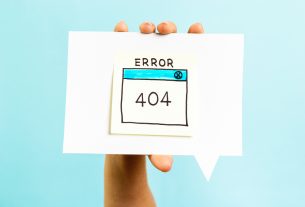Having a monitoring strategy in place is a crucial part of your online presence. It allows you to measure the health of your website, or those of your clients.
You need to know when a site goes down and having a strategy in place means you can attend to the cause immediately.
Your business could suffer a 37% reduction in your company reputation while your website is down. If that website is an e-commerce site, potential customers might assume the store is closed and never return.
Read on to discover why your monitoring strategy has failed – and what you can do to fix it.
Where a Traditional Monitoring Strategy Goes Wrong
Many companies use separate teams to focus on particular parts of their IT network. They also use a similar principle if they have a range of websites to monitor.
That can be great if you want to exploit staff expertise in specific specialties. Maybe you have separate teams for e-commerce websites and news websites.
Or you may have one set of tools to monitor website uptimes and another focused on FTP servers. You might monitor availability and performance using two separate systems.
Different types of sites come with different problems so it makes sense to keep specialists on hand to monitor them. Or does it?
Separating Teams Creates Silos
Keeping teams separate to maintain their specialisms means that the teams work independently. They don’t share data about any problems with each other.
The team responsible for the e-commerce sites might come up with solutions that would benefit the news websites. Without cross-fertilization of ideas, those solutions are lost.
You can end up with several teams working to resolve the same problem without sharing resources that could speed up the process.
They may all initiate a different resolution for the same problem, making it difficult to monitor which one works. You’re also paying several people to fix the same problem, which could be fixed by just one.
Problems go unsolved because they don’t originate in a system that the team is responsible for. With no one to oversee the system as a whole, these problems never go away.
Silos Can Cost Money, Rather Than Saving It
Different teams may need different tools. But if they all buy the tools they need without checking if the organization already has them, you may spend money on more tools than you actually need.
Paying several teams to monitor several systems can mean your site ends up being down for longer, losing you money or customers. If they pooled their knowledge, they could come up with solutions faster.
And if people leave your company, they take their expertise with them. It costs time and money to train incoming staff to replace them.
Try Switching to a More Centralized Strategy
When you centralize the system, you use standard procedures to run your monitoring strategy. Staff share resources and knowledge, meaning your team still operates even if one person leaves or is off sick.
It’s easy to update your team on new software or procedures. You only need to communicate the updates once, instead of several times.
For example, you might decide to introduce a monitor API. They let you scale your strategy from one website to however many you run.
Training your team once will save time, and money, instead of running training sessions for different teams.
Be Proactive Not Reactive
Running a monitoring strategy on the silo model tends to be reactive. Your team solves a problem after it happens.
Taking a more holistic approach means you monitor everything at once so you can see problems coming. Even if you only have one website, focusing on potential issues ahead of time will save downtime later on.
Solving problems before they happen will keep your website up and running, improving the experience for your customers. Improving load times is important for e-commerce sites.
Websites that are down for a prolonged period face search rank penalties from Google. If your client is running PPC ads, they’ll still be paying every time a user clicks on an ad, even if the website is down.
There can be over 100,000,000,000 Google searches per month. No one wants to pay to direct any of those searches to a website that doesn’t work.
Look at First and Third Party Performance
A good strategy takes both first party and third party applications into account. You may have no control over the third party element (e.g. your web host) but you can monitor outage patterns.
If site downtime becomes a regular occurrence, switch to another provider. Likewise, if a third party website plugin habitually causes problems, find an alternative.
Monitoring first-party content is much easier since you have more control over it. You can tweak anything you use as you go along.
Monitor the Whole Website
Does your current strategy only monitor the home page? Users will click through to other parts of your site and no matter how good your home page is, they’ll leave if those other pages are down.
Monitor the entire website and its content. You should know if a specific page goes down or suffers problems. Focus your efforts on that single page rather than the whole site.
Make using the website feel like a seamless experience. You might notice anomalies on single pages that don’t occur elsewhere. Your team can learn more from those individual instances than common problems.
What Should You Do Next?
If your strategy has focused on multiple elements, you’ll need to reorganize them into a single plan. Finalizing your monitoring strategy can be time-consuming while you investigate options and put procedures in place.
Save time and money by partnering with a company that can offer you a monitoring strategy that’s simple but effective.
SiteUpTime monitors your website every two minutes from eight different global locations. If a failure appears, it’ll check using a different geographical location to rule out false positives.
If you want to increase the uptime of your site – along with your peace of mind – then contact us today.




